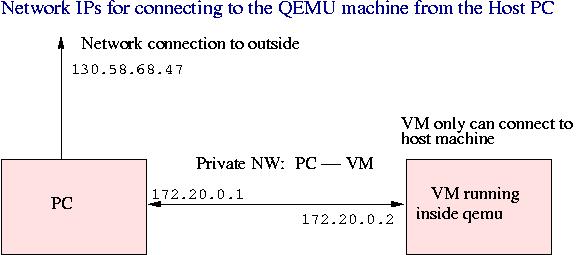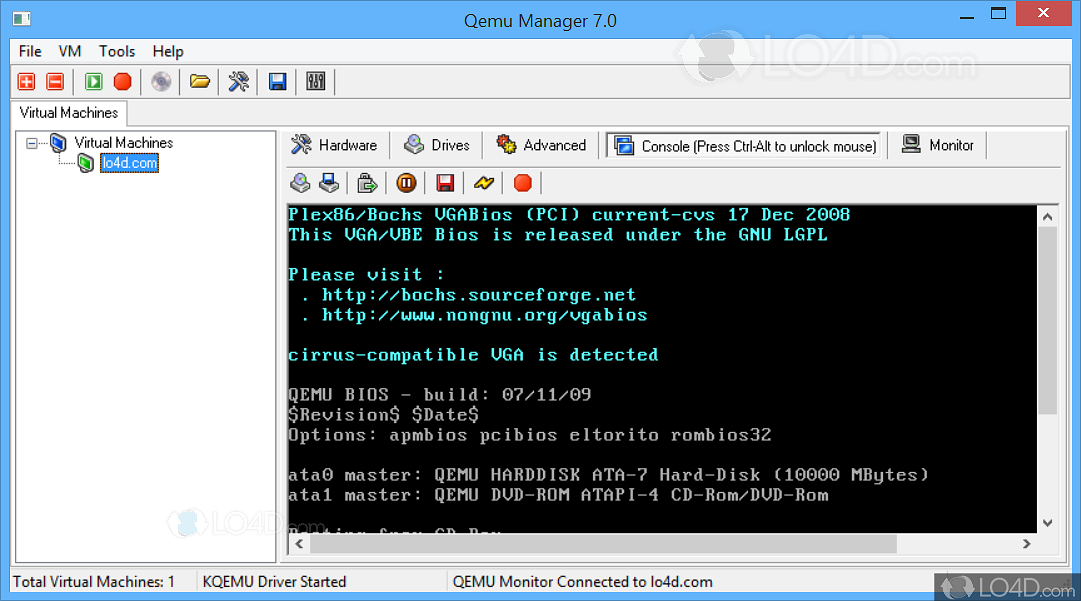
#Qemu stm32 full#
SCB->CPACR |= ((3UL << 10*2)|(3UL << 11*2)) /* set CP10 and CP11 Full Access */Īfter that, I cleaned the project, rebuilt it, and relaunched the debugger.

After saving these configuration changes, I went to the system_stm32f4xx.c file under the src/ directory of the project, and commented out these lines: /* FPU settings -*/ Under "MCU settings", there are two options for "Floating point unit" and "Floating point ABI", which I changed to "None" and "Software implementation" respectively. To solve this, I right clicked the project in the project explorer panel of the IDE, then went to C/C++ build section, then to the Settings section under that, and then finally to the "Tool settings" section of this menu. Qemu-system-gnuarmeclipse: Attempt to set CP10/11 in SCB->CPACR, but FP is not supported yet. In addition, the debugger GUI would produce no meaningful output, and Ubuntu would warn that the process had frozen. After installing the arm-none-eabi-gdb package again, I went into the project debug configuration settings, navigated to the "debugger" tab in this window, and then changed the GDB executable path from the variables the IDE had set for me to the actual GDB executable path (in this case /usr/bin/arm-none-eabi-gdb).Īfter that was done, the debugger would no longer immediately terminate, but I was still getting some errors in console shortly after it started (see below). In order to fix this, I downloaded the package from the ARM site and followed the instructions detailed here. First off, the error messages that I was getting immediately after the GUI debugger terminated were due to an incorrect installation of the arm-none-eabi-gdb package. To implement the simple “Hello world!” printing, I wrote this test.So it looks like there were a couple factors as to why this wasn't working. The STM32F1 series is based on ARM Cortex-M3 core. In details, there is a register (UARTDR) that is used to transmit (when writing in the register) and receive (when reading) bytes this register is placed at offset 0x0, so I need to read and write at the beginning of the memory allocated for the UART0. STMicroelectronics STM32 boards (netduino2, netduinoplus2, stm32vldiscovery) The STM32 chips are a family of 32-bit ARM-based microcontroller by STMicroelectronics.


#Qemu stm32 how to#
The code that emulates the serial port inside QEMU ( here in the source repository) implements a subset of the functionalities of the PL011 Prime Cell UART from ARM there is a useful technical manual from the ARM info center that describes how to interact with the hardware. STMicroelectronics STM32 boards (netduino2, netduinoplus2, stm32vldiscovery)¶ The STM32 chips are a family of 32-bit ARM-based microcontroller by STMicroelectronics.

The memory map of the VersatilePB board is implemented in QEMU in this board-specific C source from that I note the address where the UART0 is mapped: 0x101f1000. The QEMU emulator supports the VersatilePB platform, that contains an ARM926EJ-S core and, among other peripherals, four UART serial ports the first serial port in particular (UART0) works as a terminal when using the -nographic or “ -serial stdio” qemu option. Now I want to exploit QEMU’s emulation of a complete system and create the simplest “Hello world!” example.
#Qemu stm32 software#
Last time I wrote about writing and debugging bare metal ARM software using the CodeSourcery toolchain.


 0 kommentar(er)
0 kommentar(er)
